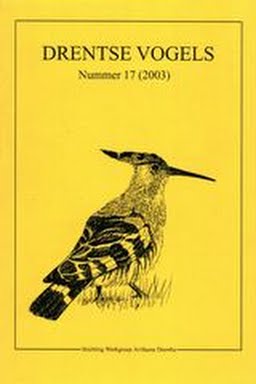2003
Terreingebruik en reproductie van de Grutto Limosa limosa in de Haulerpolder
Publication
Publication
Drentse vogels , Volume 17 - Issue 1 p. 28- 40
During 1994-2003 territorial Black-tailed Godwits were censused in a meadow reserve (119 ha) and the adjacent intensively used grassland. Breeding success was estimated by counting families after hatching. During 1994-99 numbers of breeding pairs decreased and reproduction was poor (Fig. 2). This was partly caused by an increase of vegetation height (Phragmites australis in ditches, Juncus effusus in meadows) within the reserve, forcing the birds to breed in the intensively managed grasslands nearby. During this period, mowing always started early (Fig. 1), causing extensive losses of clutches and chicks. After the ditches had been cleaned, and intensive mowing of vegetation in the reserve during the winters of 2001-03, birds resettled in the reserve (Fig. 3) and reproductive output improved. Local earthworm density did not seem to impact the distribution of breeding pairs (Table 2), but groundwater level did (Fig. 4). Especially plots with high seepage proved to be attractive. Possibly, poor earthworm densities are partly compensated by high densities of other prey species (insects), enabling adults and chicks to forage almost exclusively within the confines of the reserve in plots with tall, varied and medium-dense vegetation types.
| Additional Metadata | |
|---|---|
| Drentse vogels | |
| CC BY 3.0 NL ("Naamsvermelding") | |
| Organisation | Werkgroep Avifauna Drenthe |
|
Bert Dijkstra. (2003). Terreingebruik en reproductie van de Grutto Limosa limosa in de Haulerpolder. Drentse vogels, 17(1), 28–40. |
|
